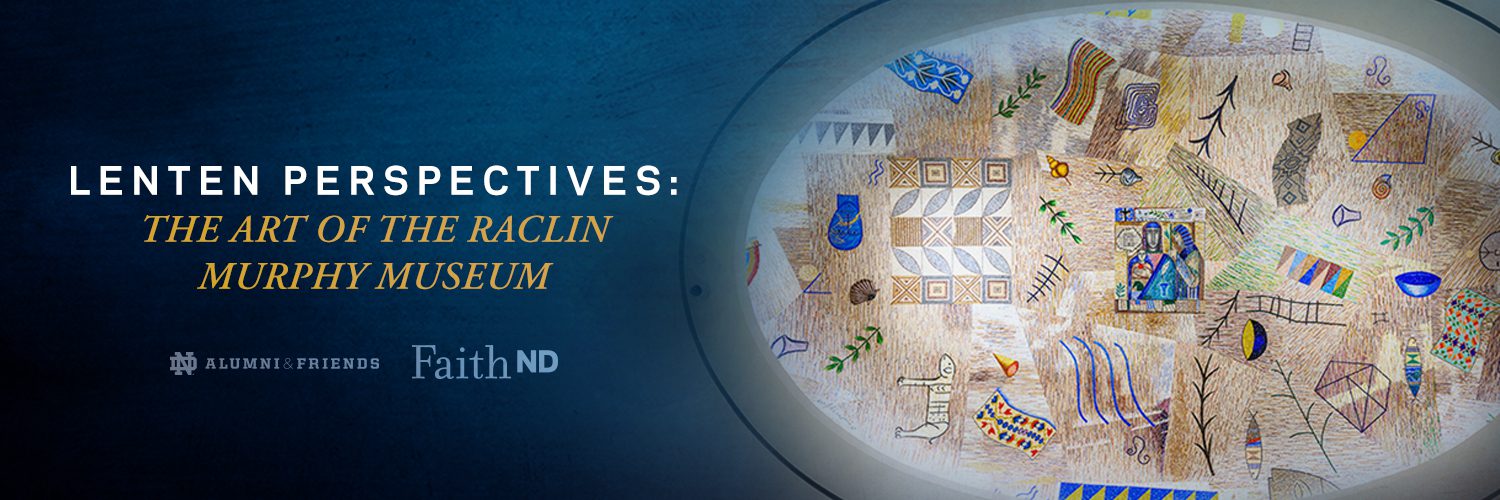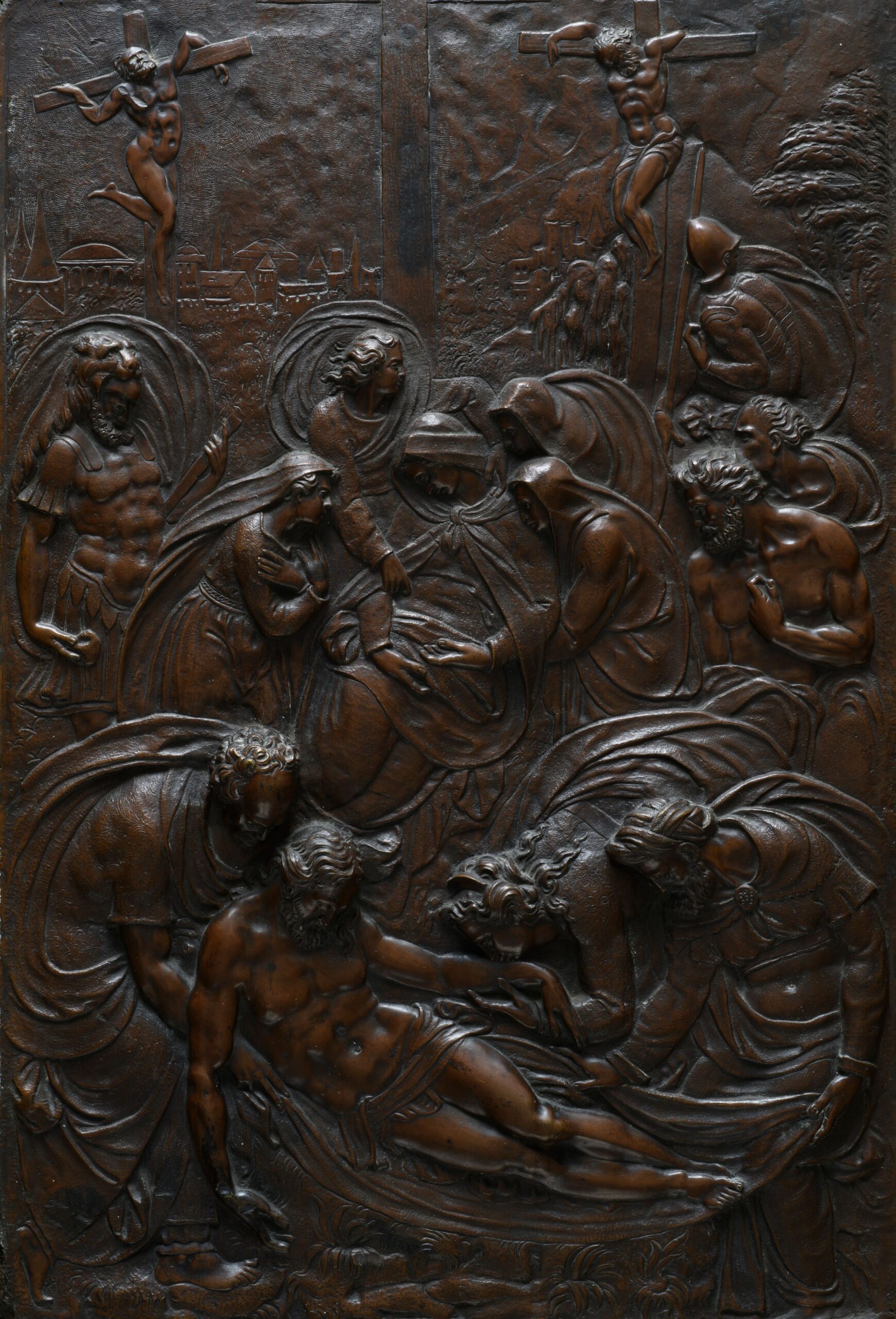Finality of the Crucifixion

Christ did not defeat death by merely touching it for only a few brief moments. He was fully human in every respect except for sin, and as such, he embraced death in its fullness so that he could overcome it once and for all. On this day of waiting, we join those who loved Jesus and grieved his loss. Yet we trust that a marvelous gain comes through this loss. And we remember what Christ taught us through his life and death: “My grace is sufficient for you, for my power is made perfect in weakness.”
Contemplate the Artwork
Saturday, March 30, 2024 12:00 pm
Robin Jensen, Patrick O’Brien Professor of Theology, director of Notre Dame’s Master of Theological Studies, and teacher of the history of Christian art, contemplates Deposition from the Cross, a 16th-century bronze cast relief sculpted by Guglielmo della Porta. If we look closely beneath the patina and the remains of the black lacquer finish, we can discern the human figures in the composition.
The scene is based on the story of Christ’s Deposition From the Cross. The sculptor has presented this in three distinct and carefully balanced tiers of action. In the foreground, three disciples attend to Christ’s body, beginning the hurried preparations for burial before the Sabbath. Immediately above them, Mary extends her arms as if yearning to reach out and embrace her beloved child. Disciples surround Mary, ministering to her in her hour of sorrow. In the background are Christ’s empty cross and the two crucified thieves. The rounded human forms and swirling garments overlap and draw the eye around the composition, creating a sense of fluid activity while at the same time stable and solemn.
Holy Saturday is a day of grief for all who loved Jesus. On this day, Christ’s followers absorbed the shock and finality of the crucifixion. They took Christ down from the cross and cleansed, wrapped, and prepared his body for burial. Everything felt real, final, and permanent. They did not know what would soon happen.
Christ did not defeat death by merely touching it for only a few brief moments. He was fully human in every respect except for sin, and as such, he embraced death in its fullness so that he could overcome it once and for all.
On this day of waiting, we join those who loved Jesus and grieved his loss. Yet we trust that a marvelous gain comes through this loss. And we remember what Christ taught us through his life and death: “My grace is sufficient for you, for my power is made perfect in weakness.”
This Lent, ThinkND invites you to join FaithND and the Raclin Murphy Museum of Art for a journey of Lenten discovery through some of the most significant liturgical paintings in the Raclin Murphy collection, challenging you to contemplate prayer, fasting, sinfulness, mercy, grace, and God’s infinite love from the perspectives of the artist’s gaze. To subscribe to the FaithND Daily Gospel Reflection visit faith.nd.edu/signup.

For closer viewing of this work through the digital collections of the Raclin Murphy Museum of Art, please click here.
View EventMeet the Faculty: Robin Jensen

Robin Jensen is the Director of Master of Theological Studies and Patrick O’Brien Professor of Theology at the University of Notre Dame. Her research and publication focuses on the relationship between early Christian art and literature and examines the ways that visual images and architectural spaces should be regarded as modes of theological expression. Her published essays and books contend that, in addition to interpreting sacred texts, visual images enhance liturgical settings, reflect the nature and content of devotional piety, and explicate ritual practices. She teaches courses on the character of late antique Christian and Jewish art, the history and evolution of Christian architecture, the iconography of the cross and crucifix, depictions of Christ and the Virgin Mary, and the place and controversies over images and idols in ancient and early medieval Christianity. Additionally, she has researched the practices, distinctive character, and material evidence of Christianity in ancient Roman North Africa. Her current project, tentatively titled “From Idols to Icons” (under contract with the University of California Press) examines the emergence of a Christian material piety in the fourth and fifth centuries. This work discusses the perceived danger of visual representations of divine beings, early controversies over the miraculous power of saints’ shrines and relics, the sacralization of structures and geographical places, and the belief that images may facilitate the presence of holy persons in their absence.
